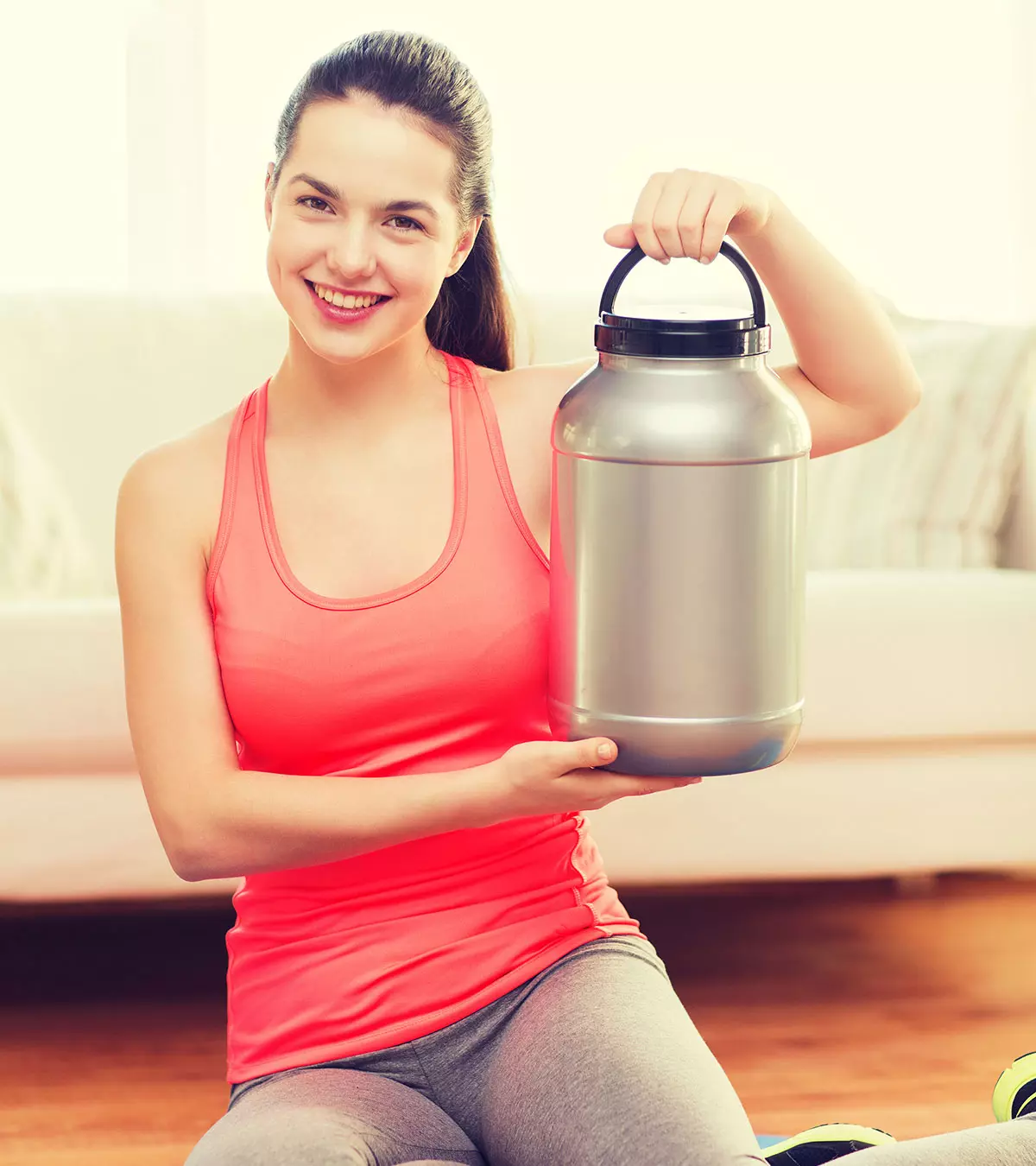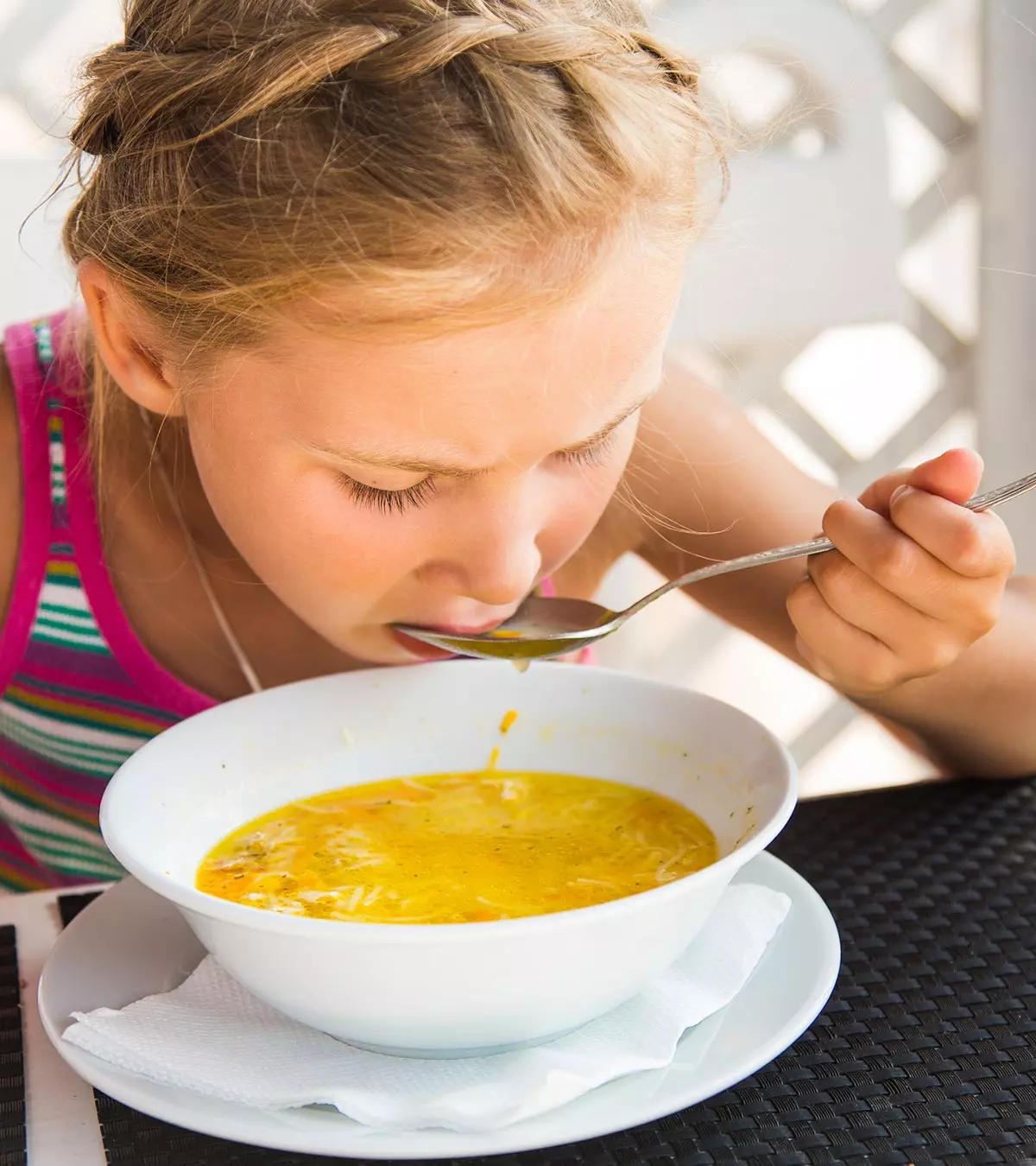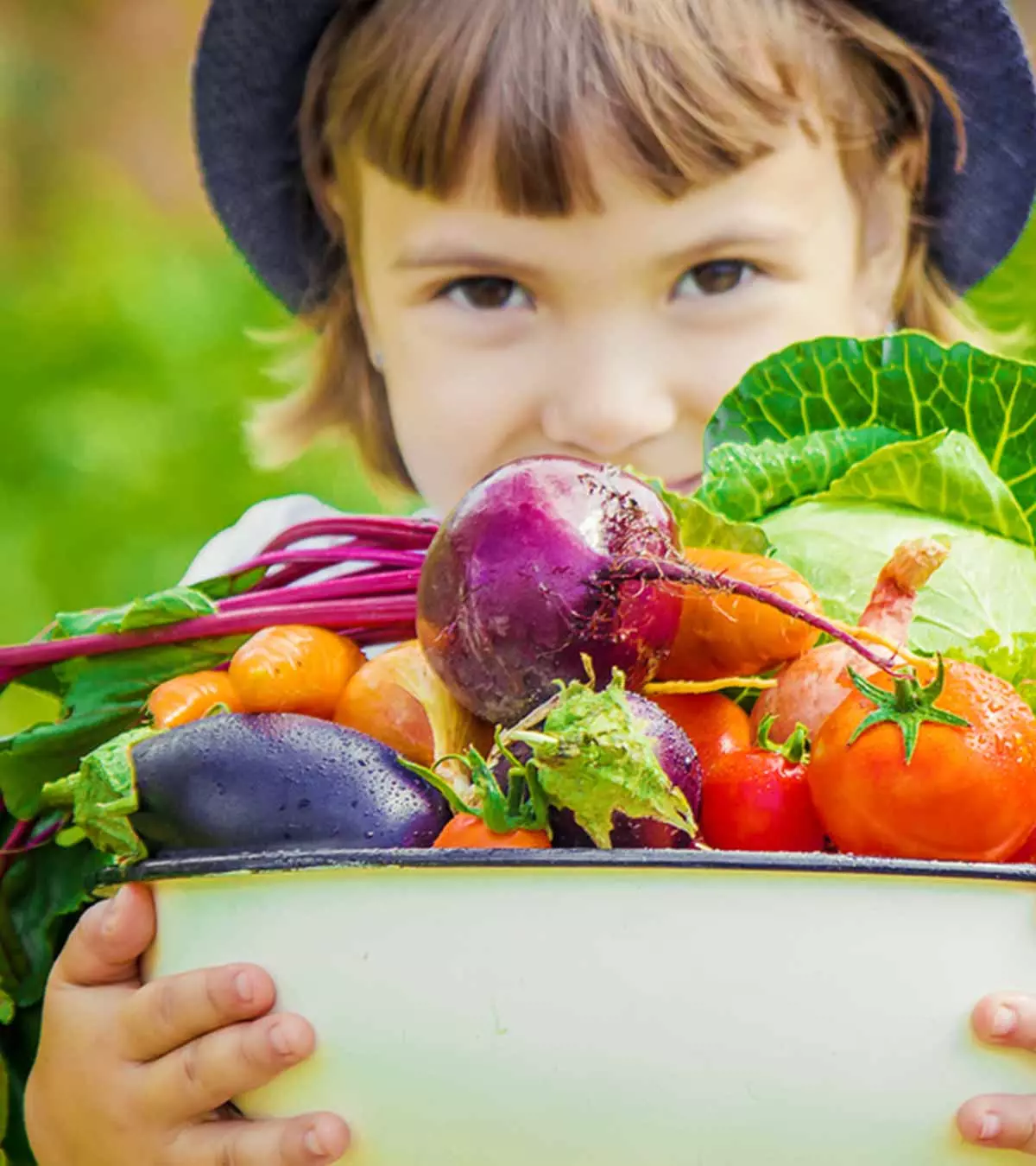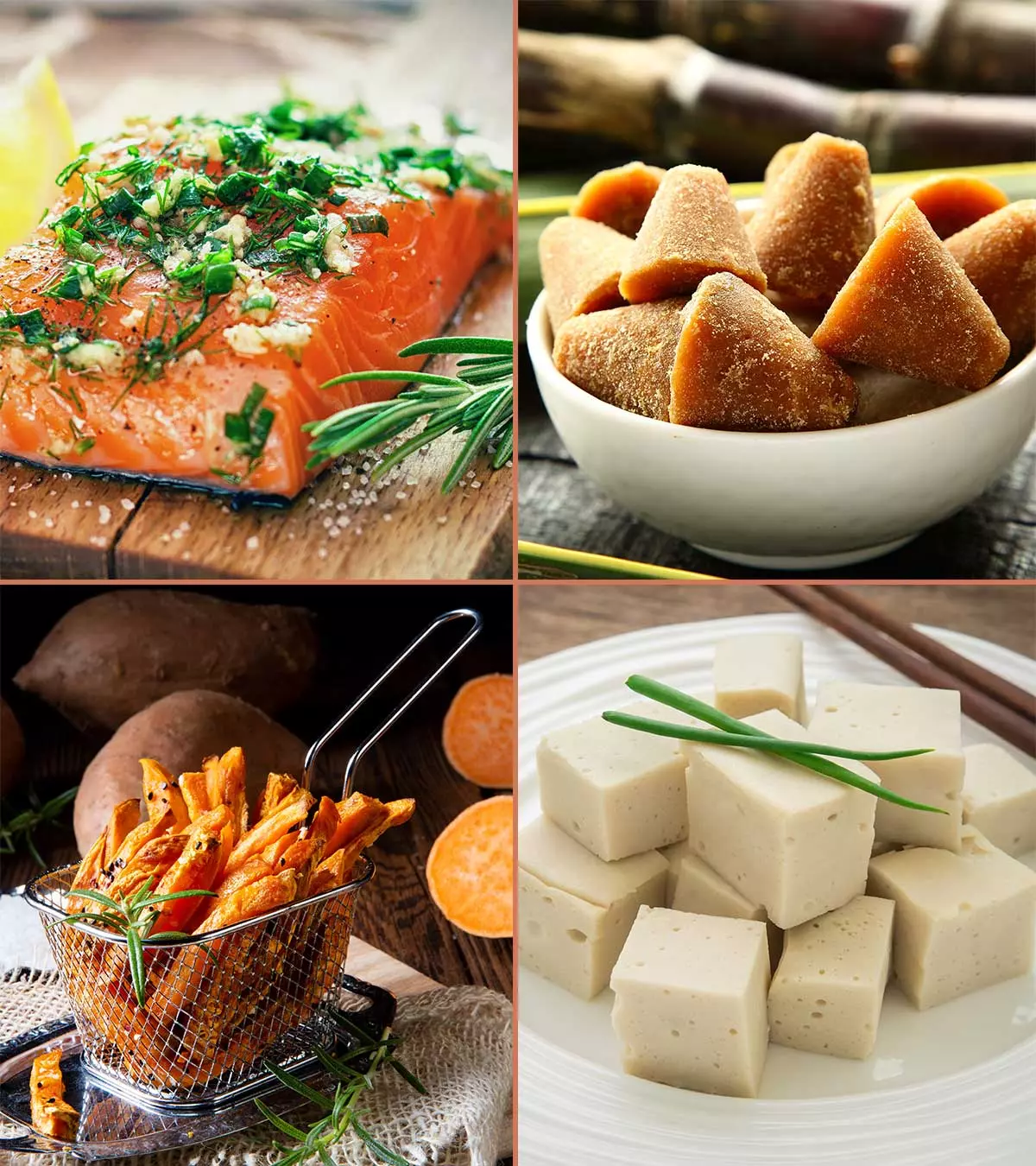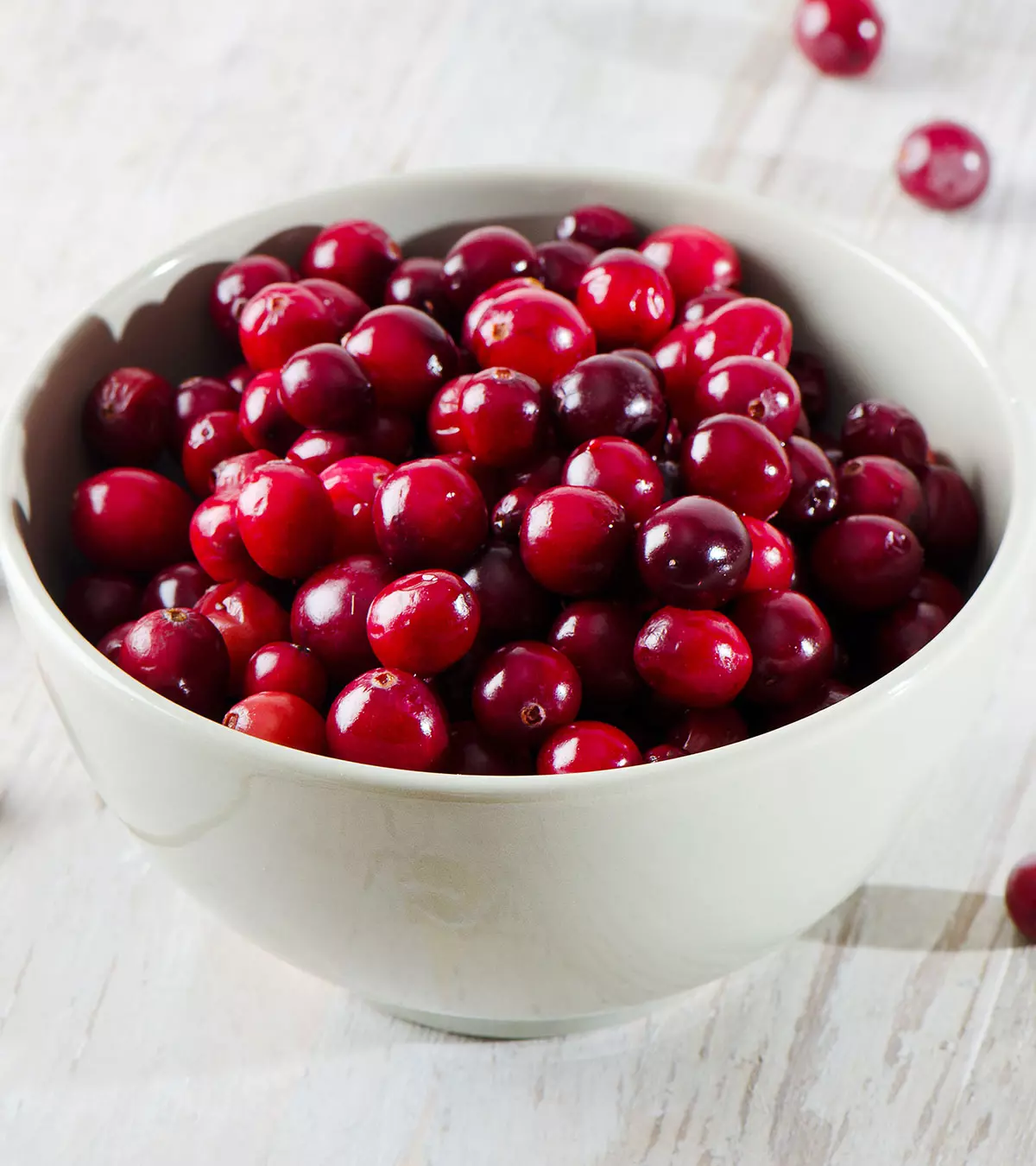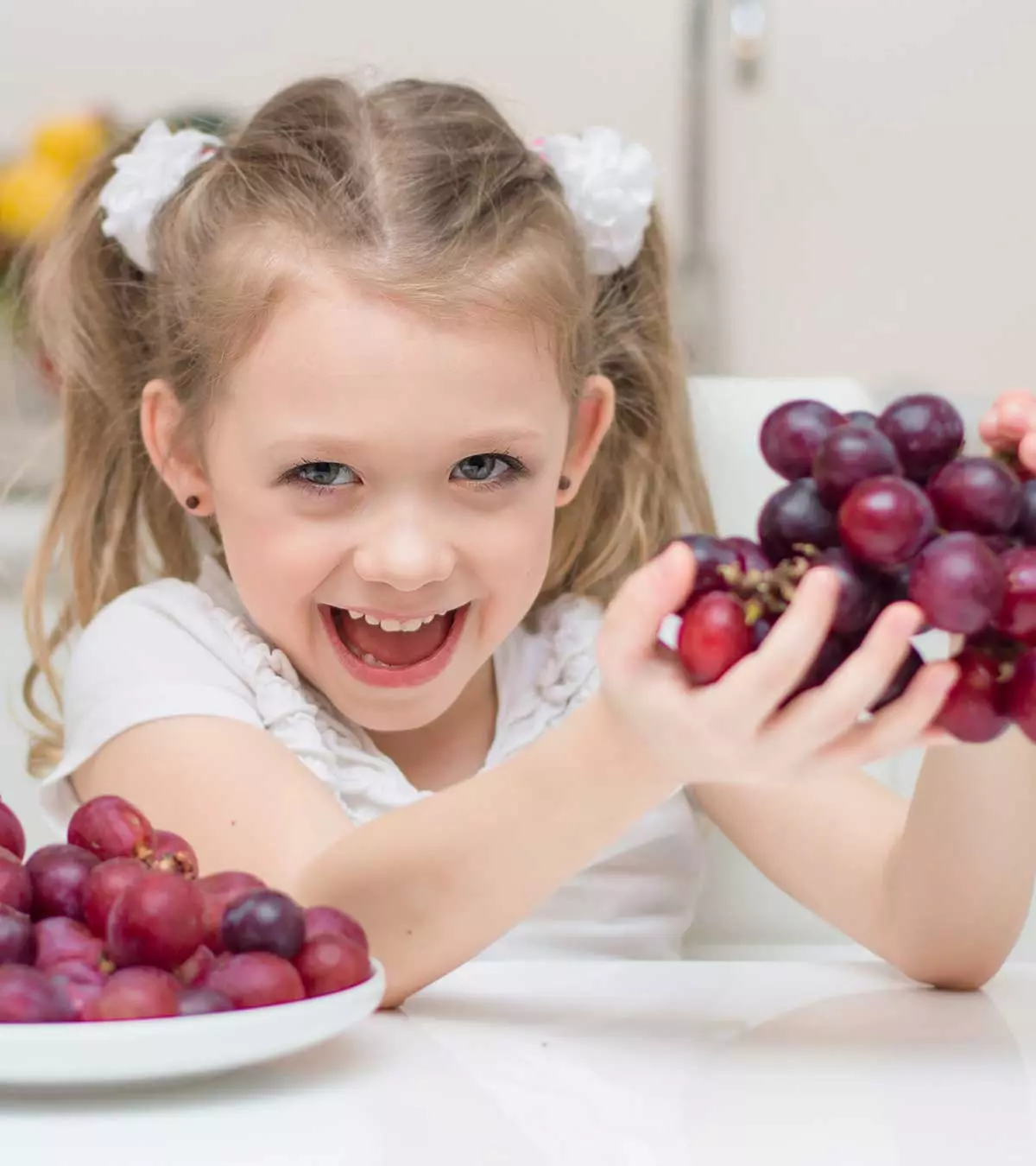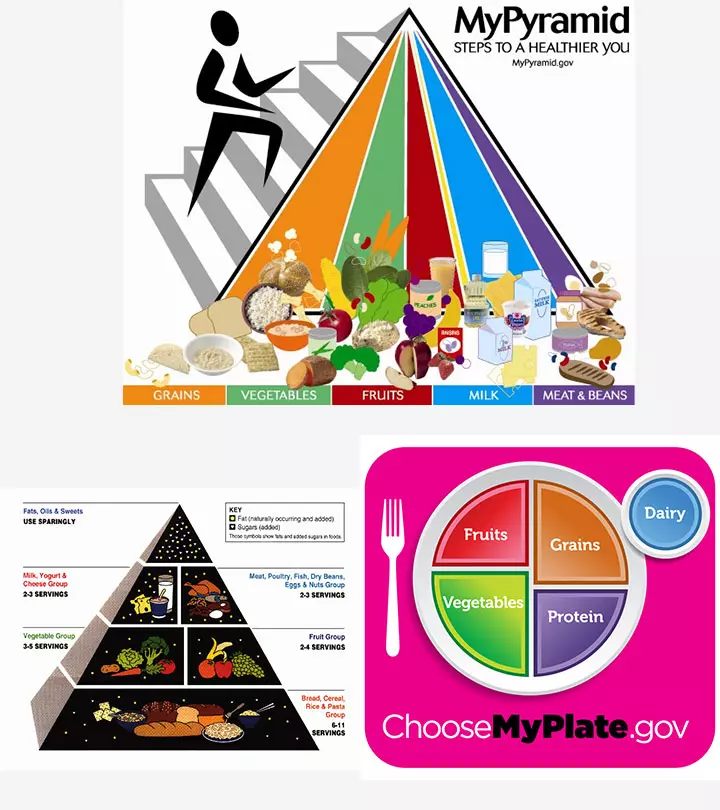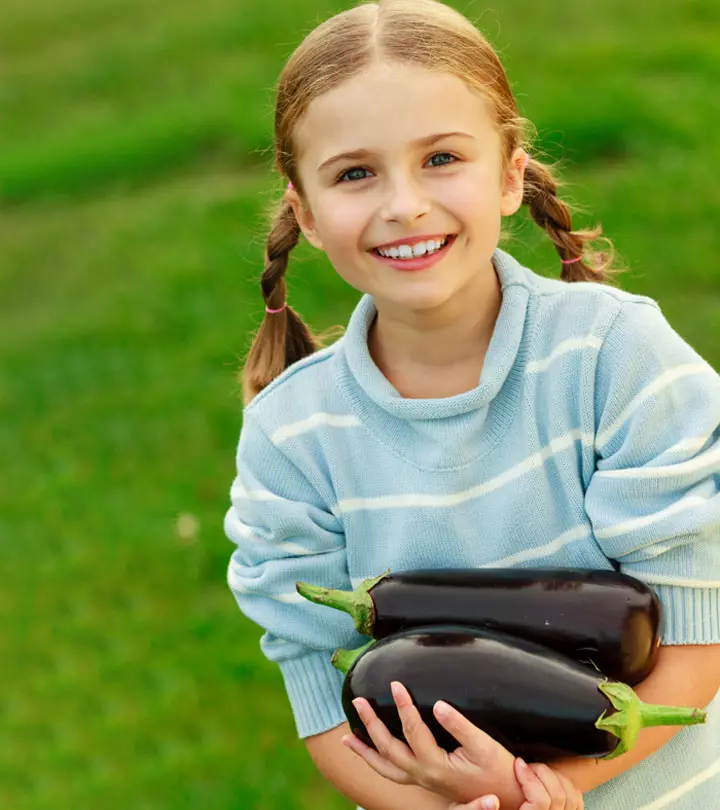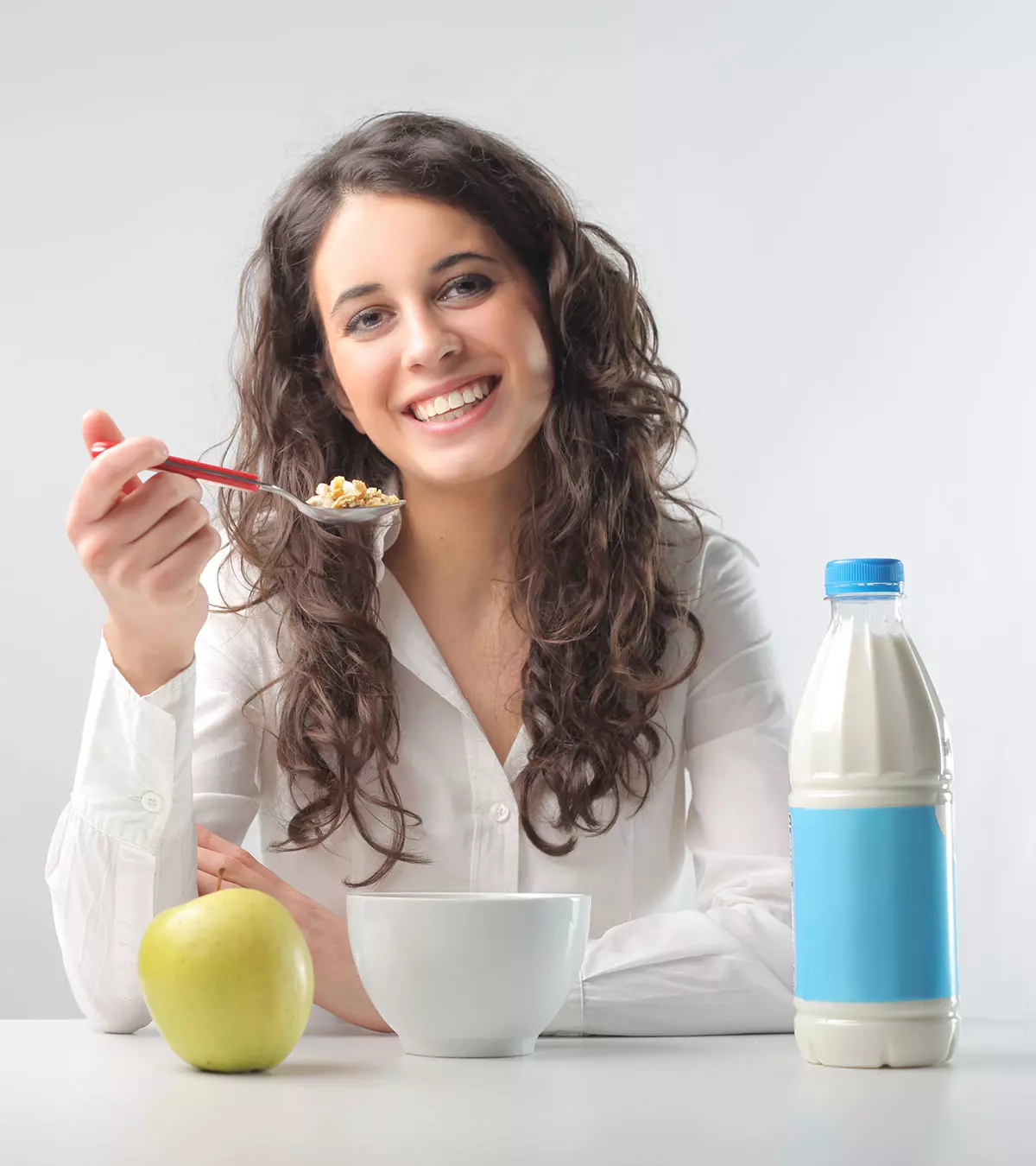
Image: Shutterstock
Protein is an essential nutrient required for growth, muscle and bone development, and maintaining energy. The recommended daily allowance of protein is 52 grams for boys and 46 grams for girls (14). Giving high protein foods for teens helps them meet these requirements because, as the Academy of Nutrition and Dietetics observes, teenagers derive 10 to 30% of their daily calories from protein (14). The right amount of protein can help in building a strong immune system and keeping diseases at bay. In this post, we have put together a list of the best protein-rich foods that can meet your teen’s needs, while also promoting healthy eating habits.

Key Pointers
- High-protein foods are essential for teenagers to support body growth and maintain skin and hair health.
- Tuna and salmon are excellent sources of protein, containing 15 to 30 grams per serving.
- Eggs are protein-rich and contain DHA, which improves cognitive functions. One egg offers 6 grams of protein.
- Cheese, lentils, beans, and peanut butter are also protein-rich options.
Protein-Rich Foods For Teens
Katie Hlucny, registered dietician from North Dakota says, “Teens can meet their protein needs with simple, practical meals that aren’t overly complicated. For breakfast, they can try Greek yogurt with a handful of granola or a peanut butter and Greek yogurt smoothie. Lunch options include turkey and avocado wraps or tuna salad paired with whole-grain crackers. Dinner can be as simple as grilled chicken with a baked sweet potato or pasta made with protein-rich chickpea noodles.
”Washington-based registered dietitian Alicia Chacha Miller opines, “For easy snacks, options like hummus with veggies, edamame, and roasted chickpeas offer plant-based protein, while quinoa, lentils, and beans can be incorporated into grain bowls, soups, or tacos for an extra nutritional boost.”
Here are some of the most common high-protein foods for teens that you may include in their meals.
1. Yogurt
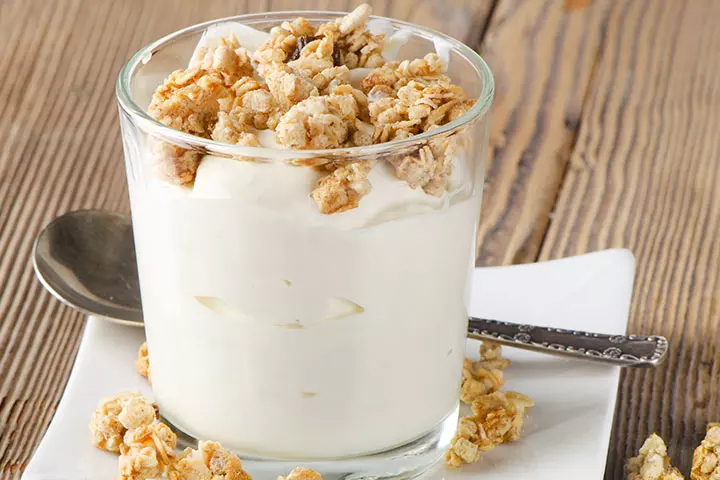
Yogurt doesn’t sound like a good idea? Well, it is an excellent source of protein. A pack of yogurt contains about 11 grams of protein.
Bonus:
Looking to grab your teen’s attention and tempt them to eat yogurt? Tell them that snacking on Greek yogurt reduces hunger and can help with weight management (1).
How To Serve:
To make yogurt more tempting, serve it with fresh fruits.
 Quick tip
Quick tip2. Cheese
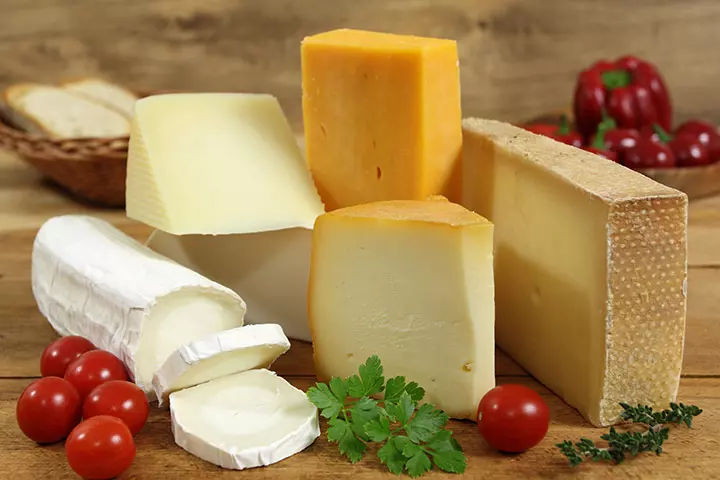
You won’t have much trouble getting your teen to try it. Cheese is popular with children and is a good source of protein. An ounce of hard cheese contains eight grams of protein. Soft cheeses like cottage cheese contain 14 grams of protein per half cup (15).
How To Serve:
Garnish your teen’s favorite dish with shredded cheese or make a cheese sandwich.
3. Beans
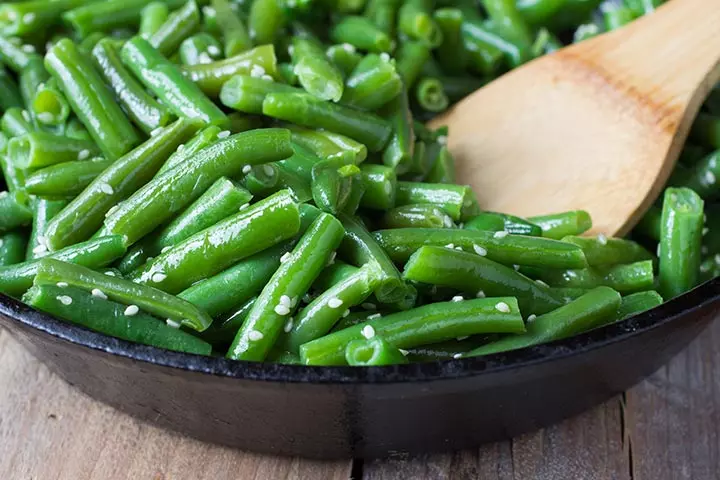
How do you get your teen to try beans? For one, tell her that one cup of dry beans contains about 16 grams of protein. Use your creativity and make beans a staple in her diet.
Bonus:
Regular intake of beans reduces the risk of breast cancer by 24% (2).
How To Serve:
Does your teen have a favorite soup or stew recipe? Just add some beans into the dish. You can also make a healthy, yummy salad using beans and legumes.
Sophie Branham, a teenage athlete and blogger, shares insights into how she maintains optimal protein intake from a vegan diet. She says, “Basing meals around a protein source has been the biggest help in increasing the amount of protein I eat. It ensures that I consume a (usually) high-value protein with every meal. My go-to’s have been a Buddha bowl or salad because they are so versatile. Some days, I want a Mexican-style bowl or salad, so I will put together black beans, tomatoes, quinoa or rice, leafy greens, and any other foods I am jonesing for. On other days, when I am in the mood to eat a sushi bowl, I will have edamame, tofu, sushi rice, mixed greens, and lots of veggies (i).”
4. Lentils
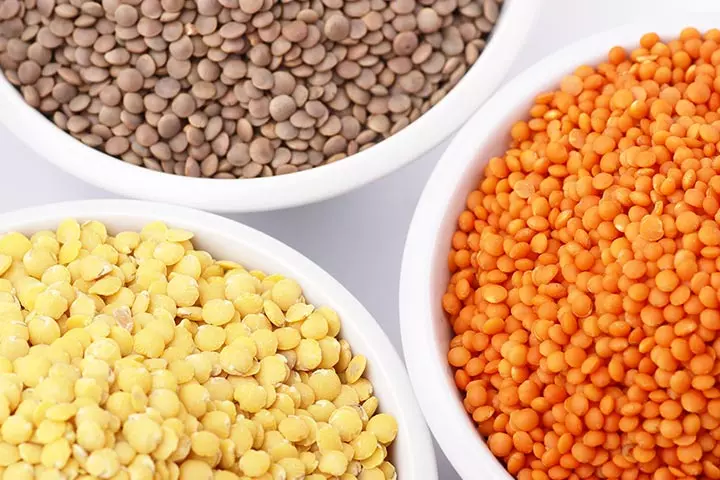
Lentils are among the healthiest foods available in the world. ½ a cup of lentils contains about 9 grams of protein.
Bonus:
If you are a vegetarian family, lentils are the perfect choice for your teen. Lentils are as good a source of protein as meat and offer excellent vegetarian and vegan options (3).
How To Serve:
Pair lentils with vegetable soup or pasta salad.
5. Peanut butter
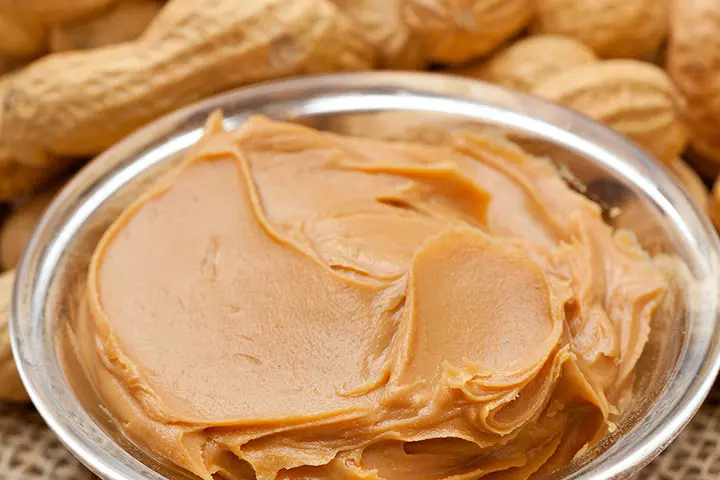
It’s hard to find a teenager who does not love peanut butter. A serving of peanut butter contains 8 grams of protein.
Bonus:
Peanut butter, apart from tasting heavenly, can also prevent diabetes (4).
How To Serve:
Nothing can beat the taste and goodness of a peanut butter sandwich. You can also serve peanut butter with an apple as a nutritious snack for teens.
6. Lean meat
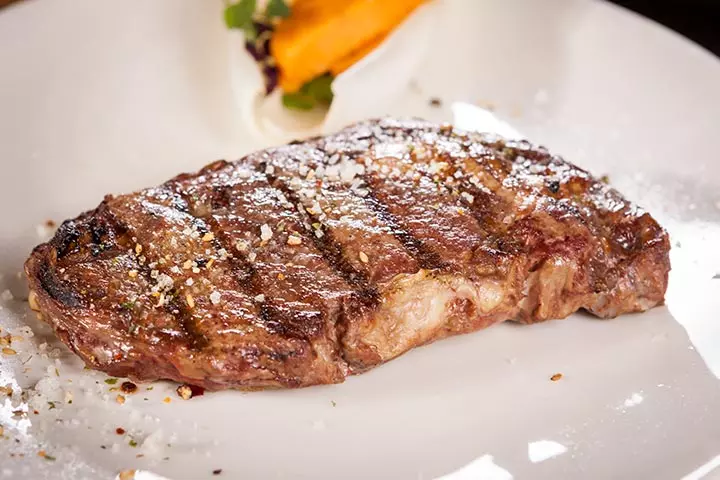
Here is another popular source of protein. Three ounces of lean meatiMeat with low fat and low calories such as beef, veal, lamb, and pork provides 21 grams of protein.
Bonus:
Lean meat is a great way to keep your teen’s heart healthy (5).
How To Serve:
Grill the beef and serve with steamed vegetables. You can also serve lean meat with baked potato or whole grain pasta.
7. Fish

Fish like tuna and salmon is another nutritious source of protein. Fish contains 15 gram to 30 grams of protein.
Bonus:
If your teen is trying to lose weight, fish will help (6).
How To Serve:
Use low-fat mayonnaise with fish and seafood of your choice and add chopped onions and fresh dill. Use this as a healthy sandwich spread.
8. Chicken
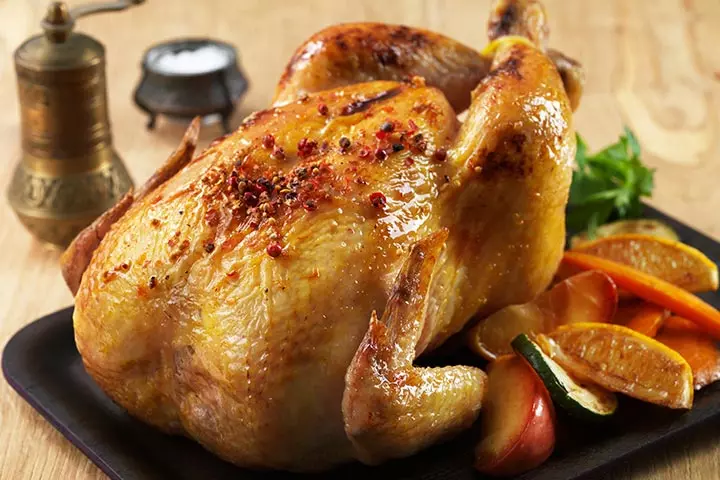
Chicken is an all time favorite among teens. So, you shouldn’t have much difficulty serving your teen healthy chicken dishes. Chicken contains about 27 grams of protein.
Bonus:
Is your teen complaining of fatigue, try giving her the essence of chicken to beat it (7).
How To Serve:
Use shredded chicken as fillings for tacos, burritos or enchiladas.
9. Eggs
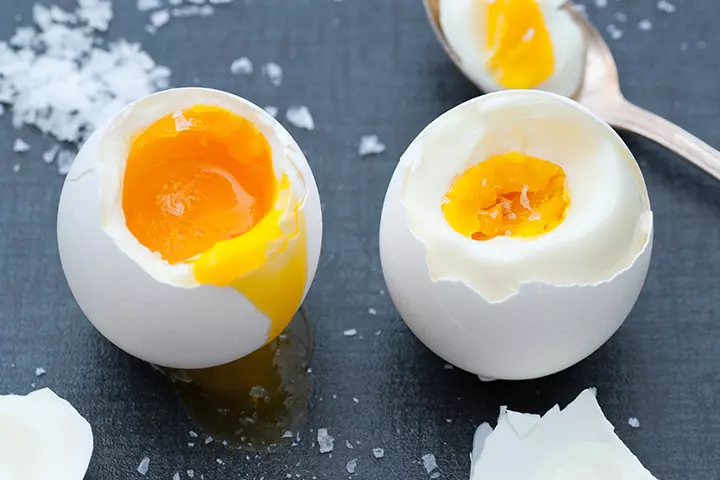
Eggs are tasty and nutritious. An egg contains about 6 grams of protein. The best part about eggs is that they are easy to cook and eat! They are the best protein for teenagers.
Bonus:
Eggs contain DHA that can help increase your teen’s cognitive abilities (8).
How To Serve:
Does your teen like salads? Add a hard boiled egg and make the salad extra nutritious. You can also serve scrambled eggs for breakfast.
 Point to consider
Point to consider10. Milk
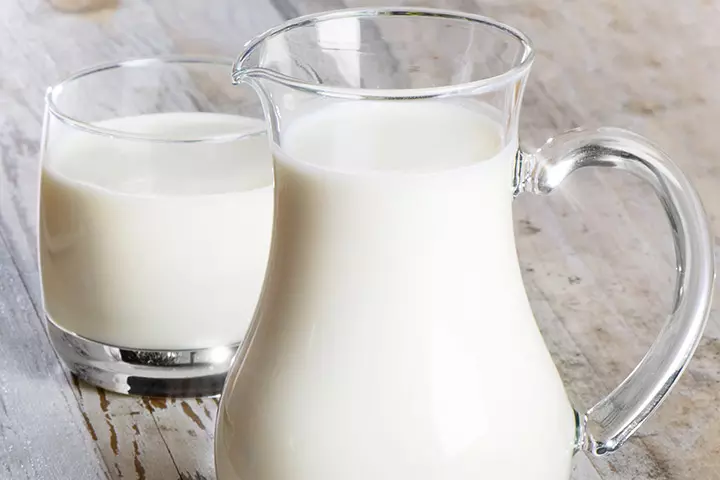
Most teens dislike milk with a vengeance. But try and get her to drink a glass of milk every day. A glass of milk contains about 9 grams of protein.
Bonus:
Regular and moderate intake of milk can help improve nutrition and bone health, and prevent the risk of developing high blood pressure (9).
How To Serve:
If milk is a no-go for your teen, try smoothies. It is the best way to ensure your teen enjoys the goodness of milk and fruits; plus they are one of the delicious and healthy breakfast ideas for teens.
Quick And Easy High-Protein Recipes
High-protein recipes are perfect for maintaining energy levels, building muscle, and keeping you satiated.
Colorado-based dietician Staci Gulbin recommends, “Incorporate protein-rich foods into dishes your teen enjoys. For example, add lean protein like ground turkey to pizza along with fiber-rich veggies, extra lean meats or cheese to sandwiches, or protein sources like yogurt, nuts, or seeds to snacks.”
Here are a few quick and easy high-protein recipes your teen might enjoy.
1. Roasted Chickpeas
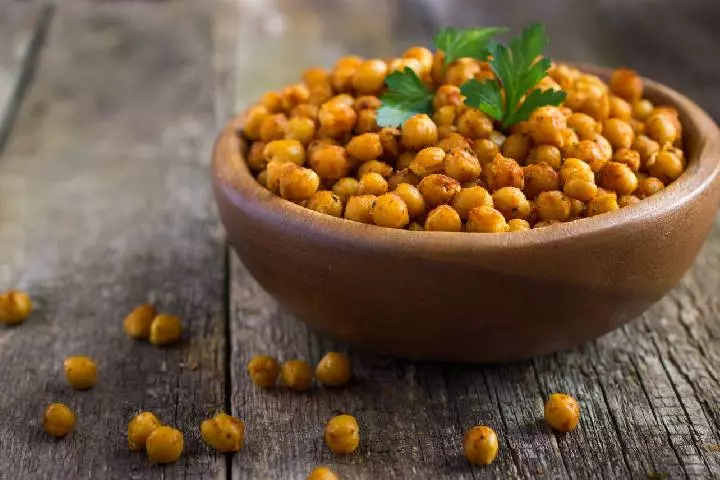
You Need:
- 1 ½ cups cooked chickpeas (drained and rinsed)
- Olive oil
- Sea salt
- Paprika, curry powder, or other spices of choice
How To:
- Preheat the oven to 425°F
- Line a baking sheet with parchment paper
- Spread the chickpeas on a kitchen towel and pat them dry
- Add salt and olive oil and toss to coat well
- Spread the chickpeas on the baking sheet and roast for 20 to 30 minutes (until golden brown and crisp)
- Remove from the oven and toss the chickpeas with selected spices while they are still warm
- Have them warm or store them in a loosely-covered container at room temperature (use within two days)
2. Overnight Oats
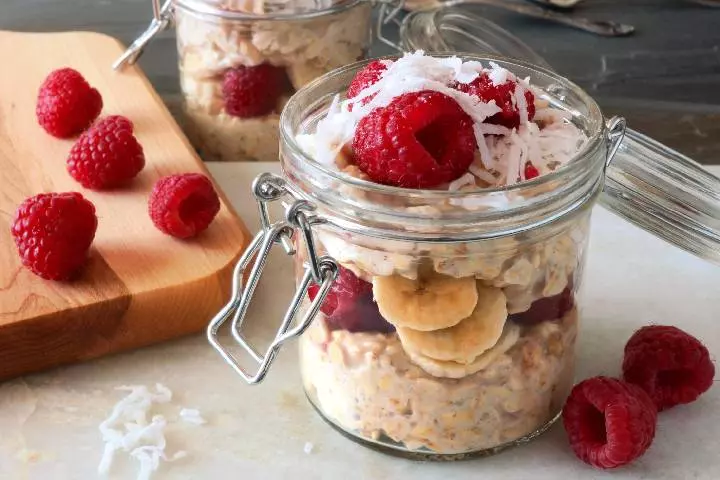
You Need:
- ½ cup milk (dairy or plant-based)
- ¼ cup plain Greek yogurt (can use dairy-free options)
- ¼ tsp vanilla extract
- 1 tsp maple syrup (optional)
- ½ cup oats
- ½ tbsp chia seeds
- Choice of toppings (fresh berries, peanut butter, almond butter, sliced bananas, chopped nuts, sunflower seeds, coconut flakes
How To:
- Mix milk, yogurt, vanilla, and maple syrup together in a small container (e.g. mason jar).
- Add chia seeds and oats and stir until it is lump-free.
- Place a lid on the container and keep it in the refrigerator overnight or for at least four hours.
- Stir the mixture before eating and add milk to adjust consistency. Then, add your favorite toppings, such as berries, bananas, seeds, nuts butter, coconut flakes, or nuts.
3. Protein-packed smoothie
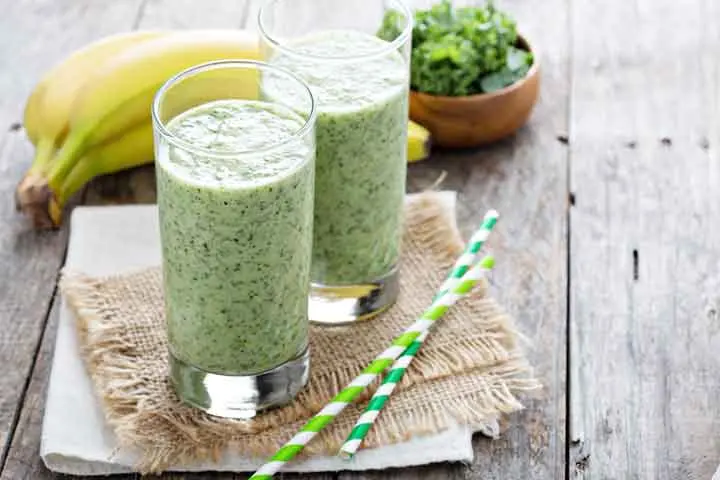
You Need:
- 1 cup spinach or kale
- 1 banana
- ½ cup Greek yogurt (can use dairy-free options)
- 1 tbsp peanut or almond butter (can use seed butter if allergic to nuts)
- 1 tbsp honey or maple syrup (optional)
- ½ tsp vanilla extract
- 1 cup milk (plant or dairy-based)
How To:
- Add the spinach or kale and banana to a blender and blend on high.
- Add the remaining wet ingredients—yogurt, milk, nut or seed butter, vanilla extract, honey or maple syrup—into the mixture and blend on medium.
- Check for consistency and sweetness and adjust if necessary.
- Pour in a glass and enjoy it as a nutritious breakfast or snack.
Wholesome High-Protein Snack Ideas For Teens
Registered pharmacist and nutritionist Sarah Gray says, “High-protein yogurt with added nuts and seeds makes a great snack for teens to boost their protein intake.”
While it is easy to reach out for some trail mix, nuts, jerkyiTrimmed lean meat that is cut into strips and dehydrated to prevent spoilage , boiled eggs, or yogurt when you want to give your teen a healthy, high-protein snack, you can get creative once in a while. Adding layers to your regular high protein options can make it tasty and filling while ensuring that your child gets all the nutrients they need. Here are some ways to make snacking fun for your teen.
1. Greek yogurt parfait
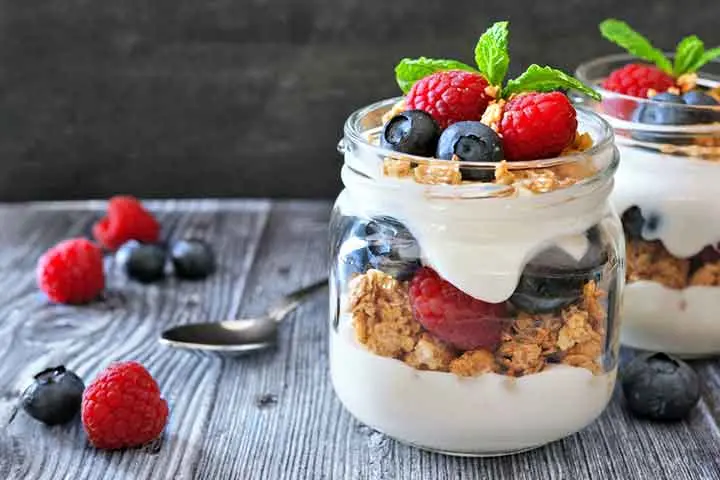
Snack time can double up as dessert time with this delicious parfait. Yogurt is not just a rich protein source; it also doubles as a source of calcium for your teen’s growing body. To make the parfait, layer Greek or plant-based yogurt with granola and fruit (berries, bananas, mangoes, and the like) in a glass or bowl for a protein-filled snack for your teen.
2. Veggies and yogurt dip
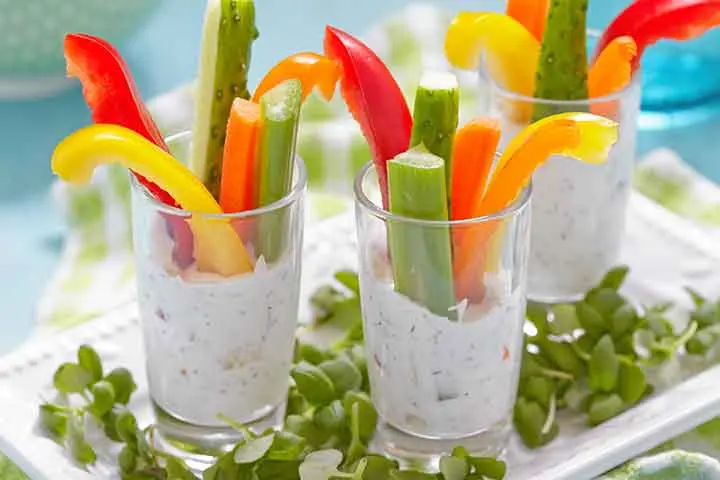
Who says vegetables are boring? Slice your teen’s favorite vegetables, such as bell peppers, cucumbers, and celery, into thin strips and present it to them with a yogurt dip. You can use any dairy or plant-based yogurt and season it with dill, cilantro, minced garlic, chili flakes, salt, and olive oil, depending on your teen’s preferences. While vegetables are not high in protein, they are rich in fiber and vitamins, making their combination with protein-rich yogurt a healthy and filling snack.
3. Peanut butter with celery sticks or apple slices

This classic high-protein snack is loved by kids, teens, and adults. Peanut butter is rich in protein and healthy fats. However, you may substitute it with seed butter if your teen is allergic to it. The celery or apple may also be substituted with whole-grain toast or crackers for a more filling and high-protein meal option.
4. Chia pudding
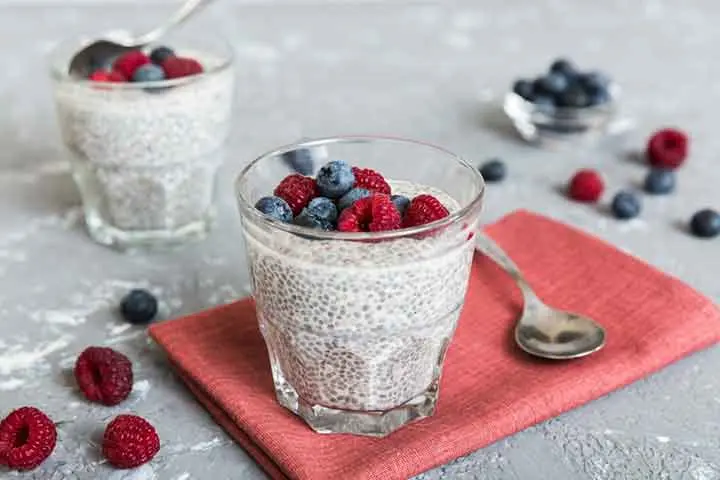
Chia seeds are high in fiber and protein, making them a wholesome snack or breakfast option. To make the pudding, soak two tablespoons of chia seeds in a cup of milk (dairy or plant-based) and a tablespoon of honey or maple syrup and let it rest for a few hours or overnight. Add flavorings, such as vanilla or cocoa, and toppings, such as fruit, yogurt, coconut flakes, roasted nuts, or granola, before serving it to your teen as a high-protein snack.
5. Lentil salad
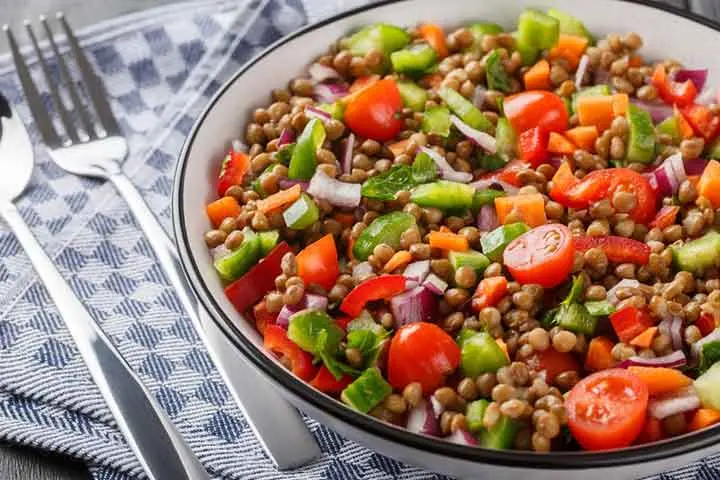
Lentils are not just meant for curries and soups. This protein, complex carbohydrate, and fiber-rich food is great as a snack. You can combine cooked lentils with chopped vegetables, such as tomatoes, cucumbers, and bell peppers, and present the salad as a healthy, high-protein snack for your teens. You can also add a light olive oil and vinegar dressing or a protein-rich yogurt and dill dressing to make it even more delicious and nutritious for your teen.
Frequently Asked Questions
1. What protein should a teenager eat?
Teenagers should include protein-rich foods in their diet to get the recommended amount of daily protein. Lean meats such as chicken and turkey, lean beef, fish, tofu and soy products, eggs, dairy products, lentils, beans, nuts, and seeds are the richest protein sources (10).
2. Is high protein good for teenagers?
According to nutritionists, high protein or extra protein intake, especially from protein supplements, are not healthy or beneficial for teenagers. Even athletes do not require additional protein supplements in their teenage years. Extra proteins can increase the pressure on the liver and kidneys and lead to dehydration rather than muscle building and development. In most Western counties, children already get more protein than their daily requirements through a balanced diet (11).
3. Can a 15-year-old take whey protein?
Protein supplements are not recommended for teens. Protein supplements, including protein powders, are made by processing protein from plant and animal-based sources. Other essential nutrients, such as carbs, fats, fibers, and minerals, are often removed while processing. Some supplements may also contain flavoring agents and sweeteners. Furthermore, whey proteins for teens are protein supplements that are not regulated as strictly as food or medications, making them potentially unsafe for consumption (12).
4. Can a 16-year-old drink protein shake?
In most cases, 16-year-olds do not require additional protein supplements such as protein shakes or powders. Sometimes, protein shakes can be recommended for children who have protein deficiencies related to picky eating, being underweight, or following a vegan diet. However, supplements are not the best substitute for protein-rich foods at their age (11).
5. What happens if my teen consumes too much protein?
Excess protein can cause issues since it requires more energy and water for processing. Since additional protein is stored in the body as fat, it is not recommended to follow high protein diets. Teens may experience nausea and lack of appetite due to high protein intake, and it may also threaten their kidney and liver function (10).
6. What happens if my teen doesn’t eat protein every day?
Low protein intake can lead to protein deficiency. Wastage of muscles, swelling, anemia and slow growth are common signs of insufficient protein intake for one’s age (13). Therefore, it is important to understand the health benefits of protein and make sure to include enough protein in the teen’s diet to maintain good health.
7. Is protein powder safe for teenagers?
Teenagers, even teen athletes, do not particularly require protein powders. Protein powders are not regulated by the FDA and may contain artificial sweeteners and other chemicals that make them unsafe for teens (10).
8. What are the best protein sources for vegetarian teens?
Vegetarian teens can turn to dairy products, tofu, beans, lentils, quinoa, couscous, millets, and oats to meet their protein requirements.
Teenagers must consume adequate amounts of protein since their bodies undergo many physical changes. We have included ten natural protein foods for teens, along with the different ways you could include them in their diets. We have included both vegetarian and non-vegetarian sources of protein in this list. These protein sources also contain other essential nutrients beneficial for a growing teen. Try to include at least one source of protein in each of their meals to boost their intake. You may also seek the help of a nutritionist for meal planning and a few diet plans.
Infographic: Why Protein Is Crucial During Teenage Years?
Protein is essential for building and repairing tissues, protecting the immune system, and providing energy. Sufficient protein intake during the teenage years helps growth and development significantly. Read this infographic to learn about its importance for your teenager.
Some thing wrong with infographic shortcode. please verify shortcode syntaxIllustration: Healthy Protein For Teens
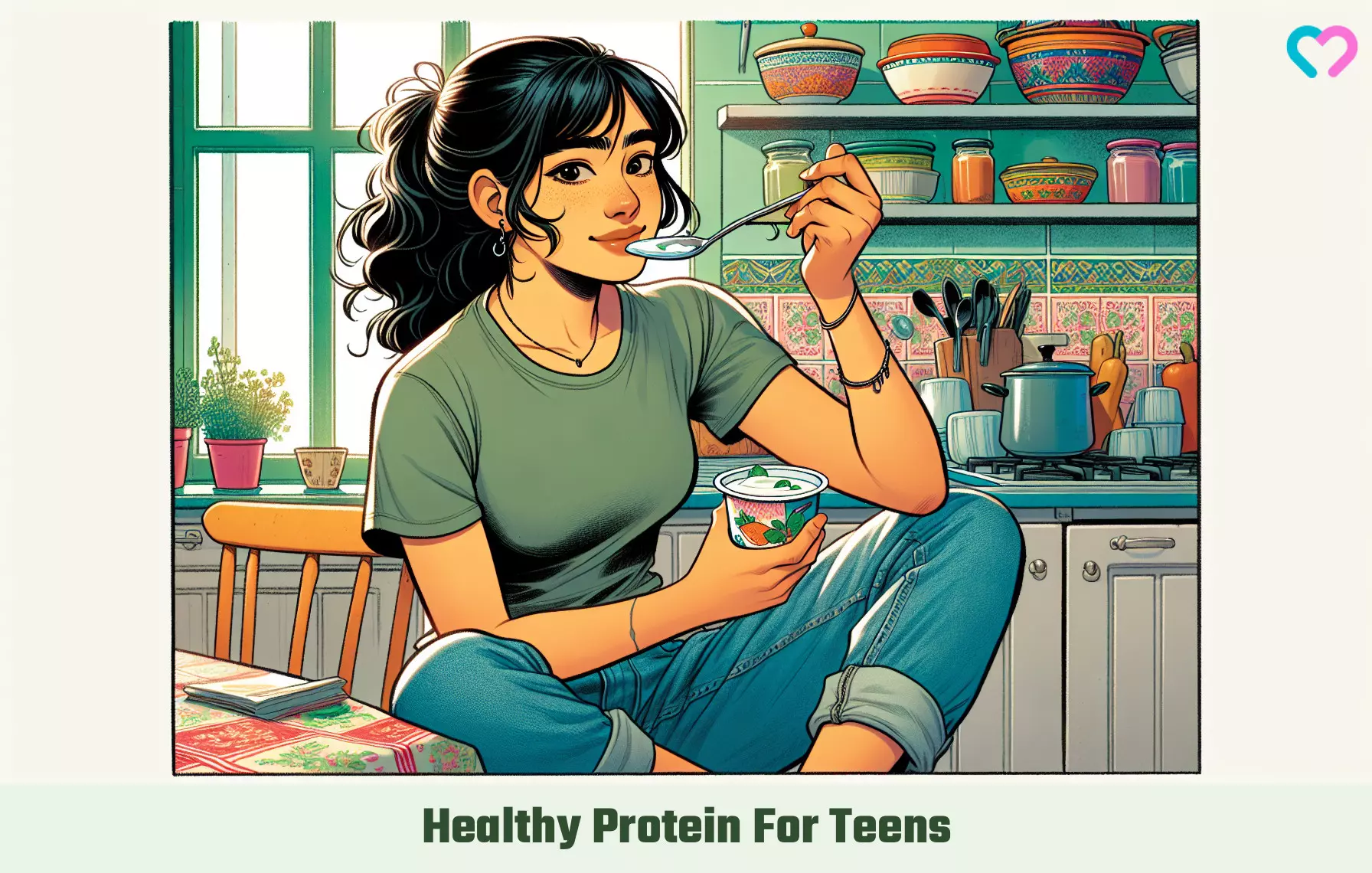
Image: Dall·E/MomJunction Design Team
Watch this informative video to learn about the top protein-rich foods worldwide! Discover nutrient-dense options and practical ways to include them in your diet for enhanced health and wellness.
Personal Experience: Source
MomJunction articles include first-hand experiences to provide you with better insights through real-life narratives. Here are the sources of personal accounts referenced in this article.
i. How to be vegan and eat a high protein diet;https://sophiebranham.medium.com/how-to-be-vegan-and-eat-a-high-protein-diet-7a117e650f1f
References
- Steve M Douglas et al.; (2013); Low, moderate, or high protein yogurt snacks on appetite control and subsequent eating in healthy women.
https://pubmed.ncbi.nlm.nih.gov/23022602/ - Nutrition & Breast Cancer.
https://cancer.ucsf.edu/sites/cancer.ucsf.edu/files/_docs/crc/nutrition_breast.pdf - Md Iqbal Hossain et al.; (2009); Lentil-based high protein diet is comparable to animal-based diet in respect to nitrogen absorption and nitrogen balance in malnourished children recovering from shigellosis.
https://pubmed.ncbi.nlm.nih.gov/19329389/ - Rui Jiang et al.; (2002); Nut and peanut butter consumption and risk of type 2 diabetes in women.
https://pubmed.ncbi.nlm.nih.gov/12444862/ - Michael A Roussell et al.; (2012); Beef in an Optimal Lean Diet study: effects on lipids, lipoproteins, and apolipoproteins.
https://www.ncbi.nlm.nih.gov/pmc/articles/PMC3238465/ - Linn A Vikøren et al.; (2013); A randomised study on the effects of fish protein supplement on glucose tolerance, lipids and body composition in overweight adults.
https://pubmed.ncbi.nlm.nih.gov/22647247/ - Emi Yamano et al.; (2013); Effects of chicken essence on recovery from mental fatigue in healthy males.
https://www.ncbi.nlm.nih.gov/pmc/articles/PMC3707410/ - Connye N. Kuratko et al.; (2013); The Relationship of Docosahexaenoic Acid (DHA) with Learning and Behavior in Healthy Children: A Review.
https://www.ncbi.nlm.nih.gov/pmc/articles/PMC3738999/ - Calcium.
https://nutritionsource.hsph.harvard.edu/calcium/ - Protein Powders and Teens: Are They Safe? Are They Necessary?.
https://health.choc.org/protein-powders-and-teens-are-they-safe/ - Why Extra Protein for Your Child Is Unnecessary – and Possibly Dangerous.
https://health.clevelandclinic.org/why-extra-protein-for-your-child-is-unnecessary-and-possibly-dangerous - The scoop on protein powder.
https://www.health.harvard.edu/blog/the-scoop-on-protein-powder-2020030918986 - Protein.
https://www.betterhealth.vic.gov.au/health/healthyliving/protein - How Teen Athletes Can Build Muscles with Protein.
https://www.eatright.org/health/essential-nutrients/protein/how-teen-athletes-can-build-muscles-with-protein - Cheese.
https://nutritionsource.hsph.harvard.edu/cheese/
Community Experiences
Join the conversation and become a part of our nurturing community! Share your stories, experiences, and insights to connect with fellow parents.
Read full bio of Dr. Misha Yajnik

Sarah Gray is a qualified and registered pharmacist and nutritionist, with over 25 years of experience. Her expertise relates to integrative nutrition and holistic support for a healthy diet and lifestyle. In specific, Sarah is an expert in supplements and managing hormones in women’s midlife. She offers her services through her online clinic.
Sarah Gray is a qualified and registered pharmacist and nutritionist, with over 25 years of experience. Her expertise relates to integrative nutrition and holistic support for a healthy diet and lifestyle. In specific, Sarah is an expert in supplements and managing hormones in women’s midlife. She offers her services through her online clinic.
- Staci Gulbin is a registered dietitian, freelance writer, health editor, and founder of Lighttrack Nutrition. She has been a registered dietitian with the Commission on Dietetic Registration since 2010 and has over a decade of experience in the nutrition and dietetics industry.
 Staci Gulbin is a registered dietitian, freelance writer, health editor, and founder of Lighttrack Nutrition. She has been a registered dietitian with the Commission on Dietetic Registration since 2010 and has over a decade of experience in the nutrition and dietetics industry.
Staci Gulbin is a registered dietitian, freelance writer, health editor, and founder of Lighttrack Nutrition. She has been a registered dietitian with the Commission on Dietetic Registration since 2010 and has over a decade of experience in the nutrition and dietetics industry. - Alicia Chacha Miller is a registered dietitian specializing in maternal and pediatric nutrition. She holds an MS in Nutrition Science from the University of Southern California and founded Cardamom Nutrition.
 Alicia Chacha Miller is a registered dietitian specializing in maternal and pediatric nutrition. She holds an MS in Nutrition Science from the University of Southern California and founded Cardamom Nutrition.
Alicia Chacha Miller is a registered dietitian specializing in maternal and pediatric nutrition. She holds an MS in Nutrition Science from the University of Southern California and founded Cardamom Nutrition. - Katie Hlucny is a registered dietitian with over 2.6 years of experience in the field. She holds an MS in Human Nutrition and Food Science from the University of Wyoming and a BS in Dietetics from the University of North Dakota. In addition to her professional experience, Katie is a mom with a baby starting solids using a baby-led weaning approach.
 Katie Hlucny is a registered dietitian with over 2.6 years of experience in the field. She holds an MS in Human Nutrition and Food Science from the University of Wyoming and a BS in Dietetics from the University of North Dakota. In addition to her professional experience, Katie is a mom with a baby starting solids using a baby-led weaning approach.
Katie Hlucny is a registered dietitian with over 2.6 years of experience in the field. She holds an MS in Human Nutrition and Food Science from the University of Wyoming and a BS in Dietetics from the University of North Dakota. In addition to her professional experience, Katie is a mom with a baby starting solids using a baby-led weaning approach.
Read full bio of Ria Saha
Read full bio of Swati Patwal
Read full bio of Dr. Joyani Das








